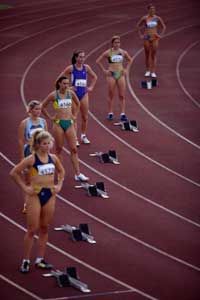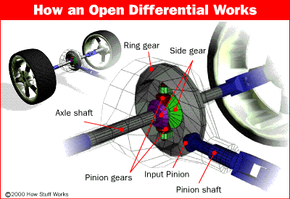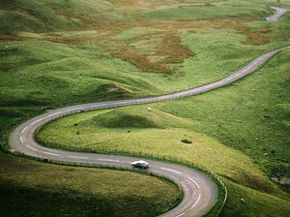If you find yourself suddenly in the market for a new car, the terminology can often be difficult to follow. Sure, the latest models fresh from the factories look great on the commercials, twisting through the scenic countryside and taking curves on coastal highways as only a "professional driver on a closed road course" can. But then automakers start pulling out the acronyms: XWD? TCS? EBD? If those three threw you for a loop, you might also have problems with this one: eLSD.
This little acronym stands for electronic limited slip differential. Still confused? Well, let's ignore the "eLS" part for a moment and focus on the "D." A differential is a gear assembly designed to allow one wheel on an axle to turn faster than the other one does. To understand why this is necessary, think about the last time you watched a track and field event. When runners race each other around the track, their starting lines are staggered. The closer a runner's lane is to the grassy field in the center, the farther back his or her starting position is. Likewise, the runner in the outermost lane has a start position ahead of all the other athletes. If all the starting positions were lined up side by side, the race would be grossly unfair because the innermost runner would have a shorter distance to run than everyone else would.
Advertisement
Now imagine a car driving around in circles on the same track. The wheels on one side of the vehicle would effectively be in one inner lane while the wheels on the other side would occupy an outer lane. This wouldn't be an issue while the vehicle was driving straight. During a turn, however, the wheels on the outermost side of the vehicle would wind up traveling a greater distance and would therefore attempt to travel at a greater speed. If the same axle connects a pair of engine-driven wheels, making a curve or a turn would cause tension to build in the outside wheel. For this tension to be relieved, one of two things has to happen: The tire skips, or the driveshaft snaps in two.
Open differential gears, the most basic variety of differential, allow each wheel to experience different rotation speeds, essentially splitting the torque two ways with an array of interlocking gears. A differential also serves to transfer the motion of the driveshaft to the axle, which intersects at a right angle. For an in-depth look at this, read How Differentials Work.
All right, so we're not quite up to all four letters yet, but on the next page we'll look at LSD.


